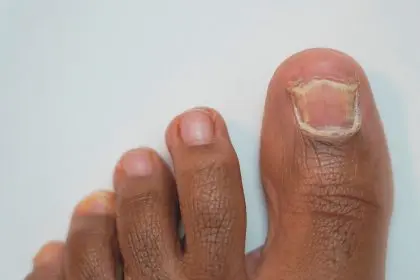A groundbreaking study from the University of Miami has uncovered an alarming presence of microplastics in human reproductive tissue, adding to growing concerns about environmental contamination and its impact on human health. The research provides compelling evidence of how these persistent pollutants infiltrate human biology at the most intimate levels, pointing to the need for urgent attention to plastic pollution’s health risks.
Understanding microplastic contamination
Microplastics, defined as plastic particles smaller than 5 millimeters, have become a pervasive environmental pollutant. These particles are not only found in oceans, rivers, and landfills but also infiltrate air, food, and water supplies, making them a ubiquitous threat. The University of Miami study has taken this concern further by identifying several types of microplastics present in human reproductive tissue. These include:
- Polyethylene terephthalate (PET)
- Polypropylene (PP)
- Polyethylene (PE)
- Other synthetic polymers
The discovery of these materials in human tissue represents a significant shift in understanding the risks of environmental exposure. For years, microplastics were mainly thought to affect ecosystems, but their presence in human bodies adds a new layer to the conversation about their widespread impact.
Research methodology and findings
The University of Miami’s study took a novel approach by examining tissue samples from men undergoing penile implant procedures. The researchers found that a staggering 80% of the samples contained microplastic particles, revealing the extent of the contamination. Seven distinct types of plastics were identified, with particles ranging from microscopic sizes to those visible to the naked eye.
The distribution of these particles was consistent across the samples, suggesting a pervasive presence of microplastics in reproductive tissue. This consistency points to multiple exposure pathways, which further highlights the need for research into how these particles are entering human biology.
Exposure pathways
Scientists have identified several routes through which microplastics enter the human body. These include:
Dietary intake: Contaminated food and water serve as primary sources of microplastic exposure. Fish, shellfish, and bottled water, in particular, are found to have high concentrations of microplastics.
Inhalation: Airborne particles from plastic pollution can be inhaled, particularly in urban areas or industrial settings where plastic production and degradation are prominent.
Dermal absorption: Microplastics can also enter the body through skin contact, such as exposure to synthetic textiles or personal care products that contain plastic particles.
Occupational exposure: Certain industries, particularly those involving plastic production and processing, increase the likelihood of microplastic exposure among workers.
Medical procedures: The study also highlighted the possibility of microplastic transfer through medical procedures, where plastic-based materials may come into direct contact with human tissue.
Health implications
The discovery of microplastics in reproductive tissue raises several concerning health implications. These include:
Hormone system disruption: Microplastics may interfere with endocrine function, potentially disrupting hormone balance and leading to reproductive issues.
Impact on tissue function: The presence of foreign materials could alter the integrity and function of reproductive tissue, affecting its ability to function properly.
Fertility issues: The accumulation of microplastics could contribute to fertility problems, as some plastics are known to leach chemicals that disrupt reproductive health.
Long-term accumulation effects: With continued exposure, the body may experience long-term consequences from microplastic accumulation, including chronic inflammation and cellular damage.
Toxin interaction: Microplastics could interact with other environmental toxins, compounding their effects on human health.
Broader environmental context
The discovery of microplastics in human tissue is a reflection of broader environmental issues caused by the growing global plastic crisis. As plastic production continues to increase, inadequate waste management systems have led to widespread contamination. Notably, microplastics are entering the food chain through bioaccumulation, further extending their reach beyond ecosystems and into human biology.
The persistence of synthetic materials, such as PET and PP, in the environment only exacerbates this issue. These plastics do not degrade easily, allowing them to remain in the environment for centuries, continuously polluting the air, water, and soil. The widespread environmental contamination from plastics further compounds concerns about their health effects.
Research challenges
Studying the impact of microplastics on human health presents significant challenges. For one, detecting these particles is complex, as they vary in size and composition. Advanced detection methodologies are needed to identify microplastics in tissues, especially considering the myriad sources through which they can enter the body.
Moreover, multiple exposure routes complicate the task of isolating specific effects from particular sources. The long-term health consequences of microplastic exposure are also difficult to predict due to the lack of historical data, making it a challenging issue for researchers to study.
Prevention strategies
Experts recommend several strategies to reduce microplastic exposure. These include:
Reducing plastic use: Minimizing the use of plastic containers and packaging helps limit the amount of plastic entering the environment.
Choosing fresh, unpackaged foods: Opting for fresh, whole foods reduces the likelihood of consuming microplastics found in packaged goods.
Filtering drinking water: Installing water filters can help remove microplastics from drinking water, especially in areas with high plastic pollution.
Avoiding synthetic textiles: Using natural fibers instead of synthetic ones can limit exposure to microplastics from clothing and textiles.
Supporting plastic reduction initiatives: Advocating for policies that reduce plastic production and waste management inefficiencies can contribute to the larger effort to combat plastic pollution.
Policy implications and future research
The findings of the University of Miami study underline the need for comprehensive policy changes. Enhanced regulation of plastic production, improved waste management systems, and the development of alternative materials are critical steps in addressing the microplastic crisis.
There is also an urgent need for standardized testing protocols to measure microplastic exposure and more research into effective prevention strategies. International cooperation is essential to tackling this global issue and mitigating its impact on human health and the environment.
Future research should focus on understanding the long-term health impacts of microplastic exposure, developing removal and mitigation strategies, and finding sustainable alternatives to synthetic materials. Biological monitoring methods and preventive measures must also be explored to protect public health.
Public health response
In response to the growing concern, public health organizations are developing comprehensive strategies to address the microplastic issue. These include enhanced monitoring systems, public education initiatives, and healthcare provider training to recognize the effects of microplastic exposure. By prioritizing research funding and focusing on exposure reduction guidelines, the health community can help minimize the risks posed by microplastics.
The discovery of microplastics in reproductive tissue marks a crucial turning point in understanding environmental health risks. This research underscores the urgent need for both individual action and systemic change to address plastic pollution and its effects on human health.














